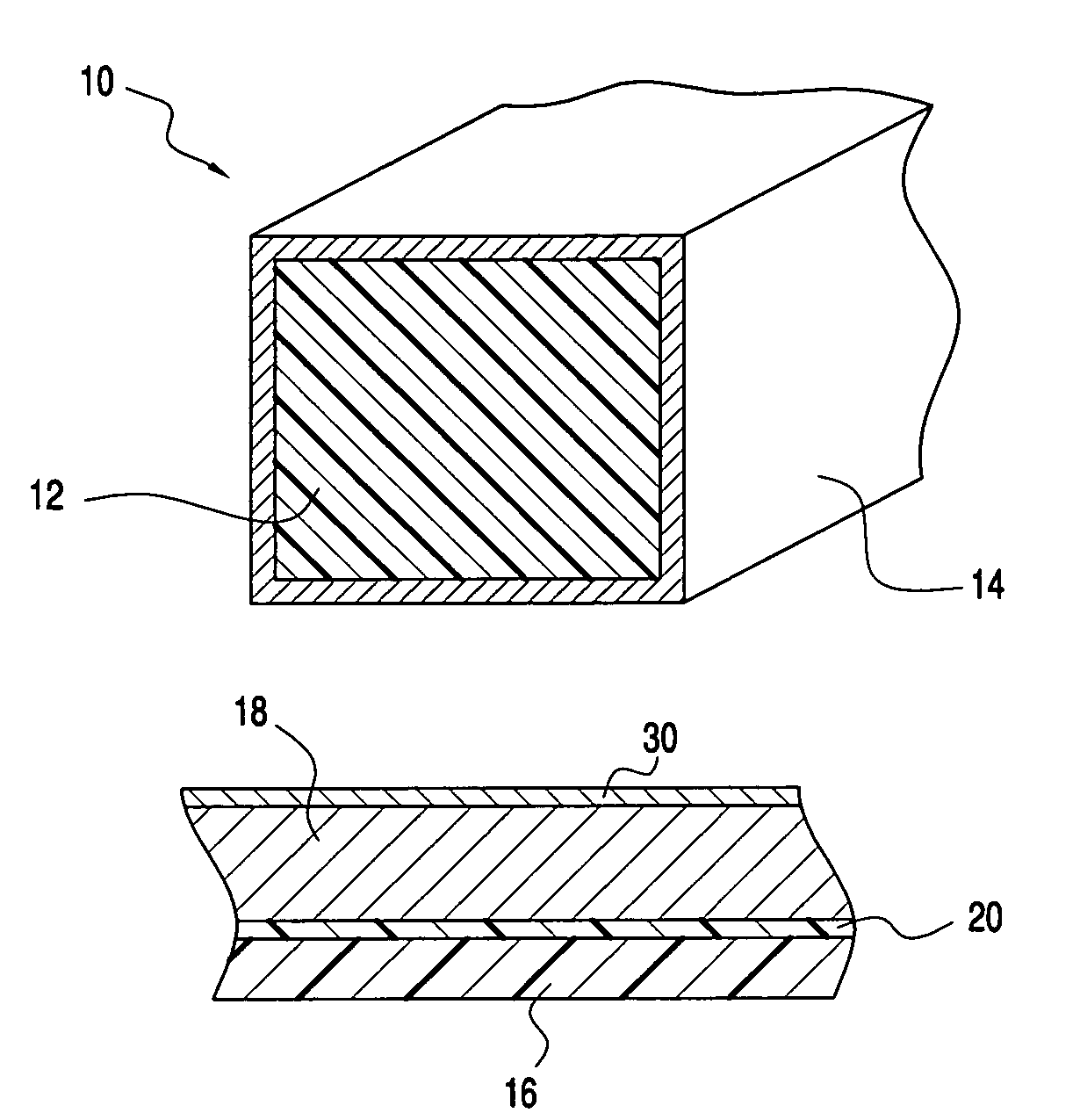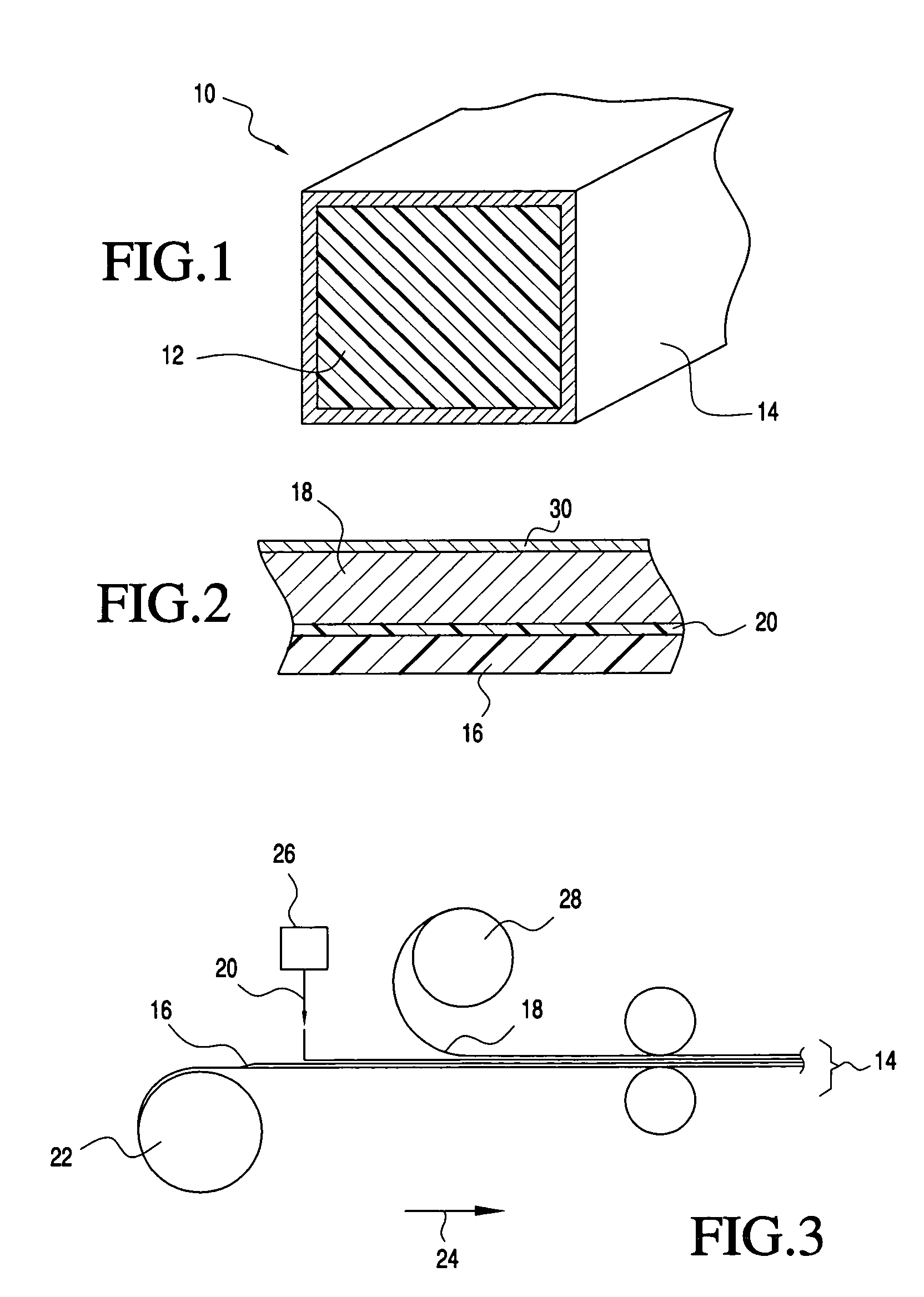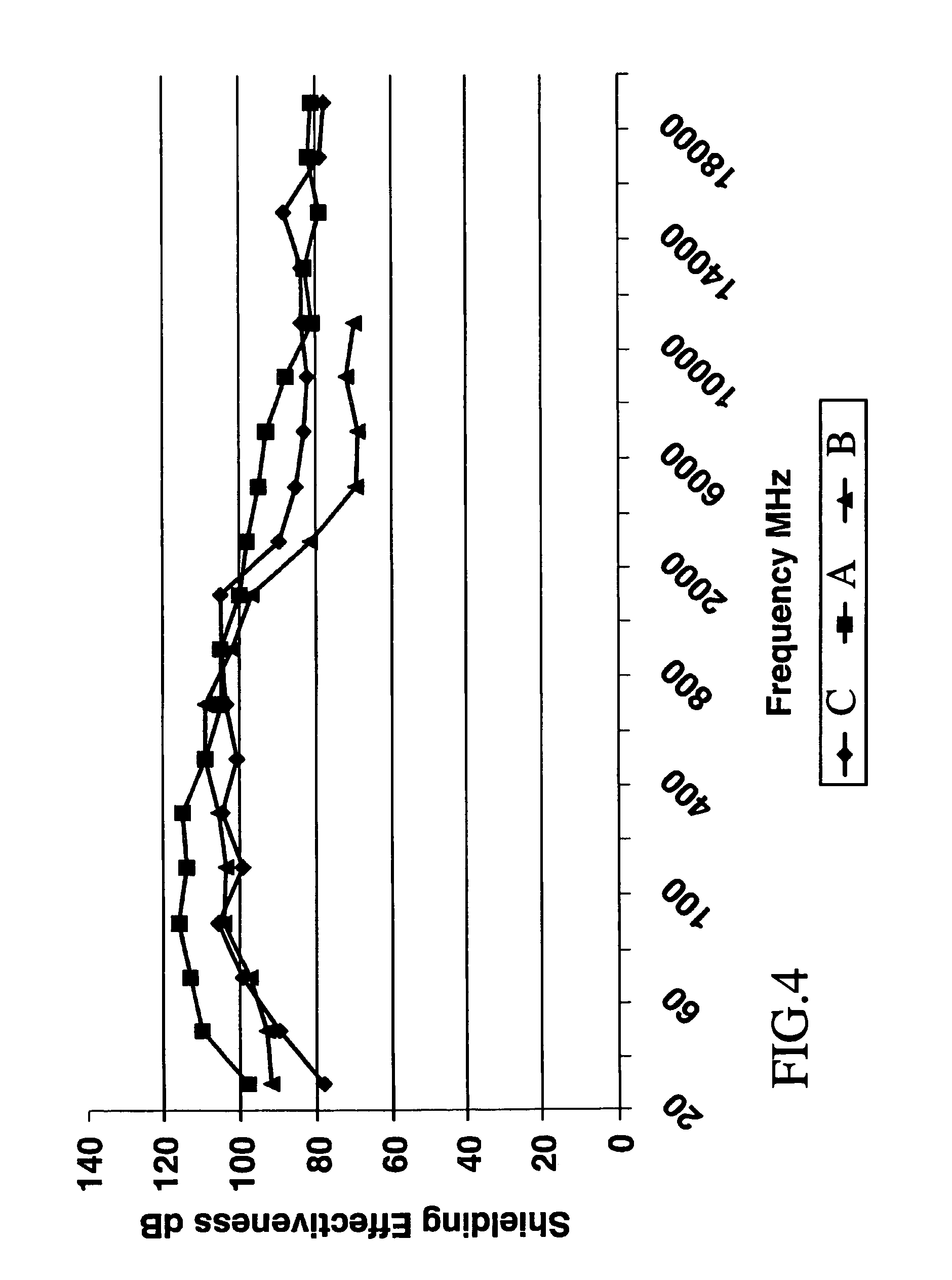EMI foil laminate gasket
a technology of emi foil and laminate, which is applied in the direction of sealing, conductive pattern formation, electrical apparatus casings/cabinets/drawers, etc., can solve the problems of reducing and affecting the efficiency of ground conduction paths
- Summary
- Abstract
- Description
- Claims
- Application Information
AI Technical Summary
Benefits of technology
Problems solved by technology
Method used
Image
Examples
Embodiment Construction
[0034]Referring to the drawings, FIG. 1 shows a conductive gasket of the present invention generally indicated at 10. The gasket comprises a foam core 12 which is resilient and compliant over a range of temperatures and which preferably exhibits good compression set characteristics such that the material will “spring back” after repeated compression and decompression and even after long periods of compression. For example, a suitable material for the core 12 is an open-celled polyether polyurethane foam in a high-resiliency formula. In a preferred embodiment the compressive set of the foam is 1% at ambient temperature and less than 5% at 70° C. (158° F. when compresses 50% for 22 hours.
[0035]Surrounding the core 12 is a conductive sheath 14. It should be appreciated that the shape of the cross section of the gasket as shown is for purposes of illustration only. Also, the thicknesses of the various components are not to scale but are shown greatly enlarged for clarity. For example th...
PUM
| Property | Measurement | Unit |
|---|---|---|
| thick | aaaaa | aaaaa |
| frequencies | aaaaa | aaaaa |
| surface resistivity | aaaaa | aaaaa |
Abstract
Description
Claims
Application Information
 Login to View More
Login to View More - R&D
- Intellectual Property
- Life Sciences
- Materials
- Tech Scout
- Unparalleled Data Quality
- Higher Quality Content
- 60% Fewer Hallucinations
Browse by: Latest US Patents, China's latest patents, Technical Efficacy Thesaurus, Application Domain, Technology Topic, Popular Technical Reports.
© 2025 PatSnap. All rights reserved.Legal|Privacy policy|Modern Slavery Act Transparency Statement|Sitemap|About US| Contact US: help@patsnap.com



